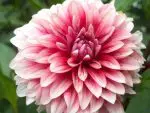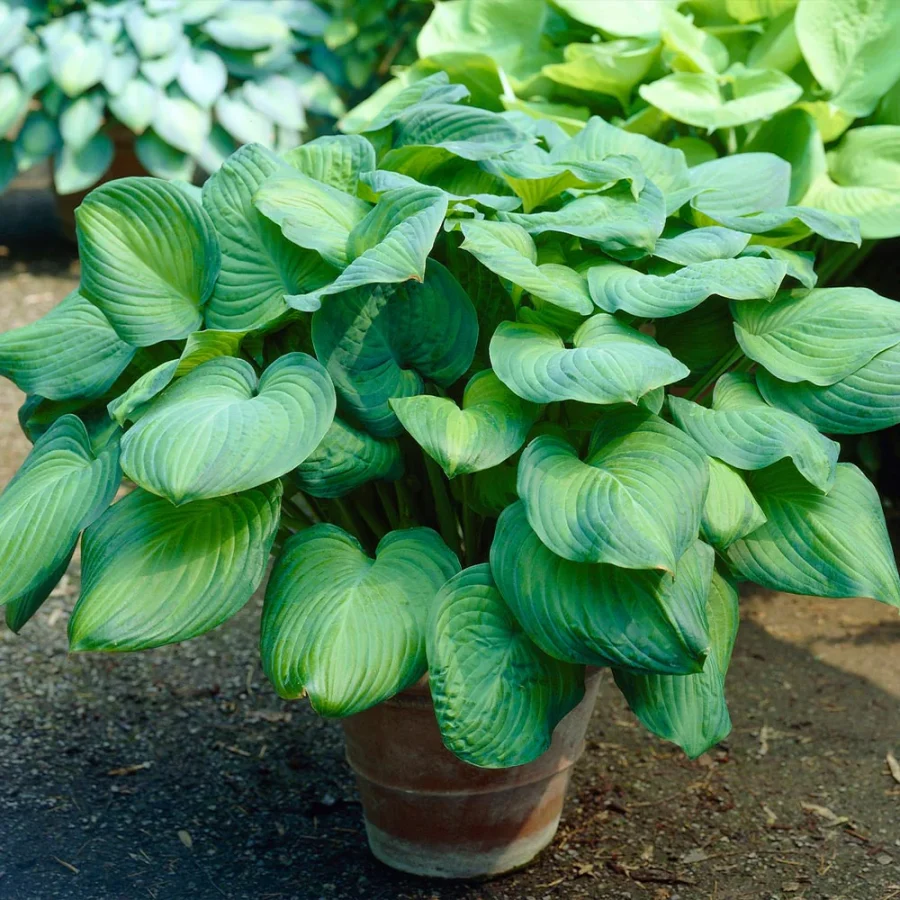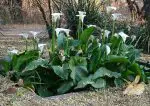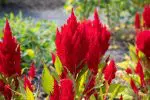This post contains affiliate links. If you buy something from one of our links we may earn a commission. Thanks
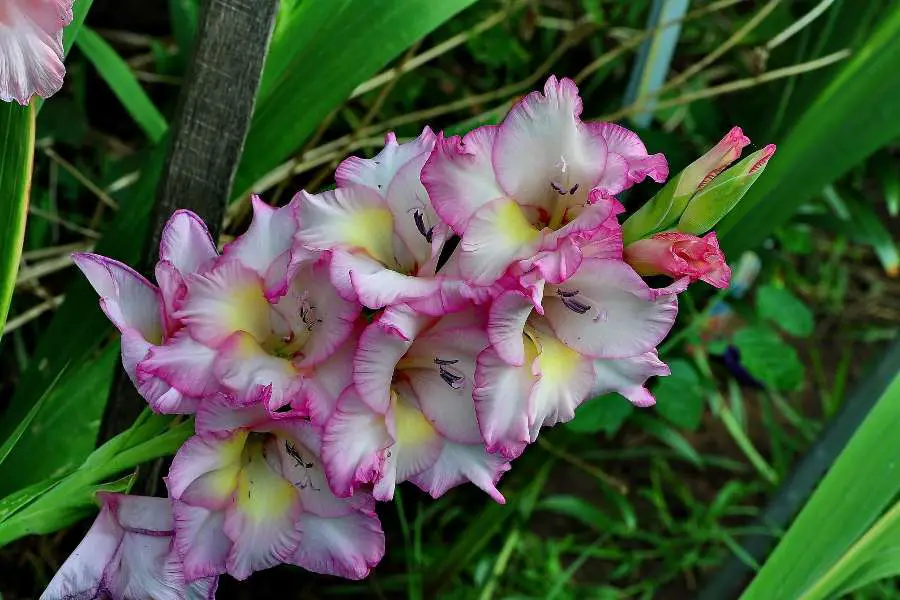
Ready to add some color to your patio or balcony? Discover the joys of planting gladiolus bulbs in pots with these simple tips and care instructions.
Planting gladiolus bulbs in pots requires a well-draining soil mix and a pot at least 12 inches deep. Place the bulbs 3-4 inches apart and cover with 4 inches of soil. Position the pot in a sunny location and water moderately. Ensure a temperature range of 60-75°F for optimal growth.
Are you looking for a way to brighten up your home or garden?
Planting gladiolus bulbs in pots is a great way to add a splash of color to any space.
These tall and graceful plants come in a variety of colors and are easy to grow in pots, making them a perfect choice for beginner gardeners or anyone looking to add some beauty to their surroundings.
With a little bit of know-how and some TLC, you can enjoy the beauty of these stunning flowers all season long. So why not give it a try?
Introduction To Planting Gladiolus Bulbs In Pots
Are you looking to add some color and beauty to your home or garden? Why not try planting gladiolus bulbs in pots?
Not only are gladiolus blooms breathtaking, but they also come in a vast array of colors, making them perfect for adding a pop of color to any space.
In this post, we will cover everything you need to know to successfully plant and care for gladiolus bulbs in pots, including the best planting times, pot selection, soil and watering requirements, how to care for your plants, and more.
So, roll up your sleeves, and let’s get started on creating a stunning gladiolus display in your home or garden!
What are Gladiolus Bulbs?
Gladiolus bulbs, also known as corms, are a type of flowering plant that produces tall, graceful spikes with a wide array of flower colors.
They are popular among novice and professional gardeners alike due to their beauty and versatility.
Gladiolus (from Latin, the diminutive of gladius, a sword) is a genus of perennial cormous flowering plants in the iris family (Iridaceae).
It is sometimes called the ‘sword lily’, but is usually called by its generic name (plural gladioli).
The genus occurs in Asia, Mediterranean Europe, South Africa, and tropical Africa. The center of diversity is in the Cape Floristic Region. The genera Acidanthera, Anomalesia, Homoglossum, and Oenostachys, formerly considered distinct, are now included in Gladiolus. https://en.wikipedia.org/wiki/Gladiolus
Benefits of Planting Gladiolus Bulbs in Pots
Planting gladiolus bulbs in pots provides a number of benefits over planting them in the ground.
First, it allows for greater control over the soil and growing conditions, which can lead to healthier plants and better blooms.
Additionally, planting in pots makes it easier to move the plants around as needed to optimize sunlight exposure.
Finally, gladiolus bulbs planted in pots can be brought indoors during colder months to protect them from harsh weather conditions, allowing for the year-round enjoyment of these beautiful flowers.
Dwarf Gladiolus Bulbs: A Great Choice for Containers
If you’re looking for a more compact option for your container garden, dwarf gladioli bulbs may be just what you need.
These smaller varieties of gladioli offer all the beauty and color of the taller varieties but in a more compact form with a shorter flower stalk that is perfect for containers.
Height Differences between Standard and Dwarf Gladiolus Bulbs
Standard gladiolus can grow with tall flower spikes up to 5 feet tall, while dwarf varieties typically reach only 1-3 feet in height
Dwarf gladioli may have smaller flowers, but they can still offer a wide range of colors and patterns.
Advantages of Growing Dwarf Gladiolus Bulbs in Containers
Their smaller size makes them more suitable for container growing, as they won’t topple over in the wind or get damaged in a storm
Dwarf gladioli can be planted in smaller pots, making them more versatile for those with limited space
They also tend to bloom earlier than standard varieties, giving you an early burst of color in your container garden.
Being shorter they will require less staking and some miniature Gladiolus may not need staking at all.
How to Grow Dwarf Gladiolus Bulbs in Containers
• Plant bulbs at a depth of 3-4 inches, with the pointed end facing up
• Space bulbs 3-4 inches apart in the container
• Use a well-draining potting mix and water regularly, but don’t allow the soil to become waterlogged
• Fertilize with a balanced, all-purpose fertilizer every few weeks during the growing season
With their compact size and vibrant colors, dwarf gladiolus bulbs are a great choice for adding color and interest to your container garden.
Just be sure to provide them with the proper growing conditions, and you’ll be rewarded with a stunning display of flowers all season long.
Some Popular Dwarf Gladiolus Varieties Include:
• ‘Atom’ – red flowers with white edges
• ‘Robinetta’ – salmon pink flowers
• ‘Princess Margaret Rose’ – light pink flowers
• ‘Jester’ – yellow and red striped flowers
• ‘Atom Heart’ – deep pink flowers with white edges
• ‘Green Star’ – green flowers with white centers
• ‘Sapporo’ – white flowers with purple edges
• ‘Peter Pears’ – orange flowers with yellow edges
Gladiolus Flowering Season
The gladiolus flowering season typically starts in early summer and can last up until the first frost in the fall, depending on the variety and location.
The length of time the flowers will bloom varies from variety to variety, but typically they can last for several weeks, with some varieties having continuous blooms for up to two months.
Regular deadheading of spent blooms can help extend the flowering period.
When to Plant Gladiolus in Pots
If you’re looking to grow gladiolus in pots, timing is key.
In this section, we’ll discuss when the best time is to plant your gladiolus bulbs, and how to protect them from any unexpected weather changes.
By planting at the right time, you can ensure that your gladiolus blooms at the height of its beauty, and you can enjoy it for as long as possible.
So, let’s get started!
Timing guidelines for planting gladiolus in pots:
Gladiolus bulbs are usually planted in spring after the danger of frost has passed.
But you can start them indoors in pots about 4 weeks before the last expected spring frost before setting out.
This will give you a head start on flowering and after that, you can plant more every few weeks for a staggered blooming season.
This timing ensures that the soil has had a chance to warm up enough to support growth, while also avoiding any lingering cold snaps that can damage or kill the bulbs.
Benefits of planting in pots over planting in the ground:
Planting gladiolus bulbs in pots rather than directly in the ground has numerous benefits, including greater control over the soil and growing conditions.
Potted plants can be moved more easily to take advantage of ideal growing conditions, and the soil can be carefully selected to provide good drainage, nutrients, and pH levels.
Greater control over the soil and growing conditions:
When planting gladiolus bulbs in pots, gardeners can choose the type of soil and fertilizer they use, ensuring that the plants have the best possible growing conditions.
Additionally, potted plants are less susceptible to soil-borne diseases and pests, which can be a major problem when planted directly in the ground.
How to protect plants from frost:
While gladiolus bulbs can be planted in pots for greater control over growing conditions, they still need to be protected from the cold.
Using frost cloths or other protective coverings during cold snaps can help to insulate the plants and prevent damage from frost.
It is probably easier to move the pots into a garage or other protected area than coving them in place.
It is also a good idea to choose a sheltered location for the pots, such as against a south-facing wall or on a covered porch, to help protect them from cold winds.
How to Pot Gladiolus
Are you ready to pot your gladiolus bulbs and watch them grow into beautiful, vibrant flowers?
With the right potting techniques, you can give your bulbs a solid foundation for success.
In this section, we’ll cover the key steps to potting gladiolus bulbs, from selecting the right pot and soil to proper planting depth and spacing.
So grab your gardening gloves and let’s get started!
Selecting the Right Pot Size and Type:
Choosing a pot that is at least 12 inches deep is crucial to provide enough space for the gladiolus bulbs to grow.
Clay or terracotta pots are also recommended as they absorb excess moisture from the soil, preventing the roots from becoming waterlogged.
Choosing the Appropriate Potting Soil:
A high-quality, loamy potting soil is ideal for planting gladiolus bulbs in pots.
Slow-release, all-purpose fertilizers can also be added to the soil to provide essential nutrients for the plants.
Use Coco Coir And Perlite
For the best results, we recommend using a potting mix that includes coco coir and perlite.
Coco coir is a sustainable and renewable material made from coconut husks, which provides excellent moisture retention and aeration for the roots.
Perlite, on the other hand, helps to improve drainage and prevent soil compaction.
Together, these ingredients create a well-draining, nutrient-rich growing medium that is perfect for gladiolus bulbs.
You can mix 25-30% perlite with coco coir to create a mix that drains fast and offers good water retention.
So, consider using a potting mix that contains coco coir and perlite for optimal growth and healthy plants.
Proper Planting Depth and Spacing:
When planting gladiolus bulbs in pots, it’s essential to ensure that they are planted at the right depth, with the root side facing down.
Planting depth should be 3 to 5 inches deep, and bulbs should be spaced 2 to 4 inches apart in the pot.
Ensuring Suitable Drainage for the Plants:
Pots with ample drainage holes are necessary to prevent water from accumulating at the bottom and causing root rot.
Placing a layer of gravel at the bottom of the pot can also help prevent clogging of the drainage holes.
Placing the Pots in Full Sun for Optimal Growth:
Gladiolus bulbs need plenty of sunlight to grow and bloom properly.
Therefore, it’s crucial to position the pots in an area that receives at least 6 hours of sunlight per day.
Some late afternoon partial shade can be beneficial during summer heat waves.
Caring for Gladiolus
Congratulations on successfully planting your gladiolus bulbs in pots!
Now that your plants are in their new home, it’s important to take good care of them so they can thrive and produce beautiful blooms.
In this section, we’ll cover everything you need to know to keep your gladiolus healthy and happy.
From staking and supporting tall stalks to proper watering and care after cutting the flowers, we’ve got you covered.
So sit back, relax, and let’s dive into the world of caring for gladiolus in pots.
Staking and Supporting Tall Gladiolus Stalks in Pots
To support the tall gladiolus stalks, you can either drive deep stakes into the soil or create a corral with bamboo stakes and string or twine.
Tomato cages are another option for tall varieties.
Driving deep stakes into the soil helps support the plant and prevents it from toppling over.
Creating a corral with bamboo stakes and string or twine helps support the stalks while allowing them to move freely in the wind.
Watering Needs of Gladiolus Bulbs
Gladiolus bulbs require consistent moisture to grow properly.
Water the plants once a week with a single soaking.
After cutting the flowers, continue to water the foliage and corms until the leaves turn brown.
This helps replenish the nutrients in the bulbs for the next season.
Tips for Cutting Gladiolus Flowers and Prolonging Their Bloom Time
To cut the gladiolus flowers, use a sharp, clean pair of scissors or garden shears to cut the stems on an angled bias.
Quickly put the flowers in water to avoid air bubbles forming in the stem, which can prevent the flowers from taking in water.
Change the water in the vase daily to prolong the blooms.
How to Deal with the Foliage After Cutting the Flowers
After cutting the flowers, allow the foliage to remain in place until it turns brown and dries up.
This helps the bulbs store nutrients for the next growing season. Once the foliage is brown and dry, dig up the corms for storage.
Overwintering Gladiolus Bulbs in Pots
Gladiolus naturally grows in warmer climates and can’t tolerate frost or freezing temperatures.
In USDA hardiness zones 7 and 8, you can mulch the pots with a layer of mulch like hay or straw to protect the bulbs from the cold.
In colder climates, dig up the corms before the ground freezes and store them in a dry place inside mesh bags, open paper bags, or boxes in a dry, well-ventilated, cool area that doesn’t freeze for best results.
This is the best way to protect the bulbs from rotting and ensure they are ready for planting in the next growing season.
Pots and Soil for Growing Gladiolus Bulbs
Choosing the Right Type of Potting Soil
Choosing the right potting soil is essential for growing healthy gladiolus bulbs in pots.
Look for a high-quality potting mix that is well-draining and rich in organic matter like coco coir and perlite.
Avoid using garden soil, which may contain pests, diseases, and other contaminants that can harm your plants.
Benefits of Using Coco Coir as a Growing Medium
Coco coir is an excellent alternative to traditional peat-based potting mixes.
It is a renewable, sustainable, and eco-friendly option that is made from the fibrous husks of coconut shells.
Coco coir is lightweight, well-draining, and has a high water-holding capacity, making it an ideal medium for growing gladiolus bulbs in pots.
Using Perlite for Optimal Drainage
Perlite is another excellent option for improving drainage in potting mixes.
It is a natural volcanic mineral that is lightweight and porous, allowing air and water to move freely through the soil.
Adding perlite to your potting mix can help prevent waterlogging and root rot, which can be detrimental to your gladiolus bulbs.
Choosing the Right Size of Pot
When it comes to choosing the right size of pot for your gladiolus bulbs, bigger is usually better.
Choose a pot that is at least 12 inches deep and wide enough to accommodate multiple bulbs.
This will give your plants plenty of room to grow and develop healthy roots.
Ensuring Proper Drainage
Proper drainage is crucial for the health of your gladiolus bulbs.
Be sure to choose a pot with ample drainage holes and add a layer of gravel or perlite to the bottom of the pot to prevent the drainage holes from clogging.
This will help prevent waterlogging and root rot, which can be detrimental to your plants.
Watering Needs of Gladiolus Bulbs
Water is an essential component for the growth and development of gladiolus bulbs.
However, it is essential to understand the right way of watering to avoid over-watering or under-watering your plants.
Here are some tips to help you water your gladiolus bulbs properly:
Watering frequency: Watering frequency will depend on the weather and the moisture level of the soil.
It is advisable to water your gladiolus bulbs once a week, giving them a deep soak.
Make sure to allow the soil to dry out slightly between watering to avoid waterlogging the bulbs.
Watering method: When watering, make sure to direct the water towards the base of the plant rather than on the leaves or the flowers.
Watering the leaves can lead to fungal diseases, which can harm the plant.
Watering the soil directly helps to provide moisture to the roots where it is needed the most.
Watering amount: Water the soil around the gladiolus bulbs until it is moist to the touch.
Do not water to the point where the soil becomes saturated or water-logged.
Overwatering can cause the bulbs to rot, and the plant may stop growing or even die.
Continue watering even after cutting flowers: After cutting flowers, continue to water the gladiolus foliage and corms until the leaves turn brown.
This helps to promote the growth and health of the plant and the corms.
Consider using a self-watering pot: A self-watering pot can be a good option for those who are unable to water their plants regularly.
These pots come with a water reservoir that releases moisture gradually, providing your plants with a steady supply of water.
Remember, proper watering is essential for the growth and development of gladiolus bulbs.
Always make sure to water your plants properly, and avoid over-watering or under-watering.
Fertilizing Gladiolus Bulbs in Pots
Importance of Fertilizing Gladiolus Bulbs
Fertilizer provides essential nutrients for plant growth and development
Nutrient deficiencies can result in stunted growth, poor flower development, and susceptibility to diseases
Choosing the Right Fertilizer for Gladiolus Bulbs in Pots
Slow-release, balanced fertilizers with equal parts of nitrogen, phosphorus, and potassium are recommended.
Avoid using high-nitrogen fertilizers that can promote leafy growth at the expense of flower production
How and When to Fertilize Gladiolus Bulbs in Pots
Apply fertilizer when the plants are actively growing, typically every 2-3 weeks.
Use a diluted fertilizer solution according to the package instructions, avoiding direct contact with the foliage or corms
Stop fertilizing when the flowers begin to fade, as this signals the end of the plant’s growing cycle
Organic Fertilizer Options for Gladiolus Bulbs in Pots
Compost and well-rotted manure can be added to the potting soil to provide slow-release nutrients as do worm castings.
Liquid organic fertilizers, such as fish emulsion or seaweed extract, can be applied as a foliar spray or mixed into the watering can
By providing the right amount and type of fertilizer, you can ensure that your gladiolus bulbs in pots will produce healthy foliage and vibrant, long-lasting flowers.
Remember to follow the instructions on the fertilizer package and avoid over-fertilizing, as this can harm the plants.
Propagation of Gladiolus Bulbs
One of the great things about gladiolus bulbs is their ability to produce offsets, or small bulbs that grow at the base of the main bulb.
These new corms can be used for propagation and can help you expand your gladiolus collection without having to purchase new bulbs next year.
Here’s what you need to know about propagating gladiolus bulbs.
When to Propagate Gladiolus Bulbs
This is best done in the fall after the foliage has died back naturally.
Offsets can be carefully removed from the parent corm stored and replanted the following year.
How to Prepare Offset Bulbs for Planting
Remove any loose or dry outer scales from the gladioli corms
Allow the bulbs to dry in a warm, well-ventilated area for a few days before planting or storing.
How to Plant Gladiolus Offsets
Plant gladiolus corms at the same depth as mature bulbs, with the pointed end facing up.
Space offsets 2 to 4 inches apart in the pot
Pests and Diseases
Growing plants in pots can help prevent some of the common pest and disease problems that come with planting in the ground.
However, gladiolus bulbs in pots are not completely immune to pests and diseases.
Pests And Diseases
While gladiolus bulbs are generally easy to care for, they can be prone to a few common problems that can affect their growth and flowering.
Here are some of the most common issues that gladiolus growers may encounter, along with tips on how to solve them.
Corm Rot
Caused by fungal infections that can affect the corm and lead to decay.
Symptoms include soft or mushy corms and yellow or wilted foliage.
Prevention includes planting in well-drained soil and avoiding overwatering.
Treatment may include removing affected corms and treating with a fungicide.
Thrips
Small, slender insects that feed on foliage and flowers.
Symptoms include deformed flowers, discolored foliage, and silvery streaks on leaves.
Prevention includes regularly inspecting plants and controlling weeds in the surrounding area.
Treatment may include using insecticidal soap or neem oil.
Botrytis Blight
A fungal disease that can cause brown or black spots on leaves, flowers, and stems.
Symptoms include brown or black spots on foliage and flowers and gray mold on affected areas.
Prevention includes providing good air circulation and avoiding overhead watering.
Treatment may include removing affected plant parts and treating with a fungicide.
Spider Mites
Tiny, spider-like pests that can cause yellowed, stippled foliage and webbing on plants.
Prevention includes regularly inspecting plants and controlling weeds in the surrounding area.
Treatment may include using insecticidal soap or neem oil.
Creative Ways to Display Gladiolus in Pots
Gladiolus bulbs not only add color and beauty to your garden or home but they can also be used in creative ways to enhance your decor.
Here are some ideas for displaying gladiolus in pots and their cut flowers.
Arranging Gladiolus in Bouquets
Cut stems of different heights and arrange them in a vase for a stunning display. Mix gladiolus with other flowers for a colorful bouquet.
Creating a Gladiolus Centerpiece
Cut stems of equal length and arrange them in a circular pattern in a low vase or bowl.
Add other decorative elements, such as candles or stones, for a unique centerpiece.
Using Gladiolus in Outdoor Displays
Plant bulbs in pots of different sizes and arrange them on a patio or deck for a pop of color.
Combine gladiolus with other potted plants for a diverse and visually appealing display.
Add color to your vegetable garden by adding gladiolus in pots or setting them in existing flower beds.
Adding Gladiolus to Floral Arrangements
Use cut gladiolus stems in floral arrangements for an elegant and sophisticated touch.
Choose complementary colors and textures to create a cohesive look.
Planting Gladiolus Bulbs In Pots FAQ
The world of gardening can be full of questions, and we’re here to help answer some of the most frequently asked ones about planting and caring for gladiolus bulbs in pots.
From how many bulbs to plant per pot to common pests and diseases, we’ve got you covered with expert advice and tips to help your gladiolus thrive.
Read on for answers to some of the most commonly asked questions about growing gladiolus bulbs in pots.
Q: Do gladiolus grow well in pots?
A: Yes, as long as the proper growing conditions are provided.
Q: How many gladiolus bulbs should I plant together?
A: Plant larger varieties with more space between bulbs, and smaller bulbs closer together.
Q: Can you leave gladiolus bulbs in pots over winter?
A: Yes, with appropriate care and protection from cold temperatures.
Q: How deep to plant gladiolus in pots?
A: Plant bulbs 3 to 5 inches deep, with the pointed end facing up.
Q: Should I soak my gladiolus bulbs before planting?
A: Soaking bulbs before planting can help them sprout faster.
Q: How many gladiolus bulbs do you plant per pot?
A: Plant 3 to 5 bulbs in a 12-inch pot or one bulb per 6-inch pot.
Q: What is the optimal temperature for gladiolus growth?
A: Gladiolus prefer daytime temperatures between 70 to 85°F (21 to 29°C) and nighttime temperatures between 60 to 65°F (16 to 18°C).
Q: How often should I fertilize my gladiolus bulbs?
A: Fertilize after flowering and in spring when the plants begin to actively grow, using a nitrogen-rich houseplant food.
Q: What are the common pests and diseases that affect gladiolus bulbs?
A: Common pests include thrips, spider mites, and bulb mites, while common diseases include corm rot, fungal leaf spots, and botrytis blight.
Planting Gladiolus Bulbs In Pots Final Thoughts
Congratulations! You’ve successfully learned how to plant and care for gladiolus bulbs in pots.
By following these tips and tricks, you can now enjoy beautiful and vibrant blooms that add color and charm to any space.
To recap, we covered the best time to plant gladiolus, how to pot and care for them, and even how to deal with pests and diseases.
Remember, don’t be afraid to experiment and have fun with your gladiolus plants.
With a little bit of love and care, your plants will thrive, and you’ll have a beautiful and rewarding experience as a gardener. Happy planting!
Read more: Backyard Gardening Ideas: 10 Easy Garden Ideas For Beginners



















